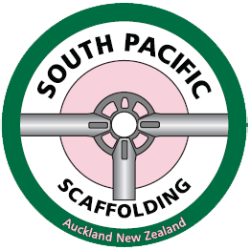Be sure to check out our Residential Scaffolding service
However, while we may often rely on our independence and intuition to guide us through both DIY projects and even at times more robust commercial developments, this does mean that we should ever take our safety for granted. This is particularly true when it comes to working from heights. The statistics for injuries – and even deaths – speak for themselves. Some of the most common and devastating injuries come from people falling. The cost of these falls to our is estimated to exceed $24 million per year, and that’s not even taking into account the human cost caused by these falls. People and their families’ lives are potentially being changed forever physically, financially and emotionally.
But often, when we picture injuries from working at heights, we envision large projects with multiple storeys. The truth of the matter is that 50% of falls are from less than three metres, with most of these falls being from ladders and roofs. This most commonly happens on residential building sites, with people falling from permanent structures such as roofs making up 40% of these injuries.
So when it comes to working on roofs, you must be following the outlined safety regulations to keep yourself safe and avoid becoming one of these grim statistics.
How to Determine if My Roofing Work Requires Scaffolding – Do Roofers Need Scaffolding?
When you are looking to do work on your roof, it is important to know that scaffolding will more than likely be required. This is due to a recent change in the Best Practice Guidelines for Working at Heights. Any work over 2.4 meters will now require scaffolding for roofing under the new guidelines – a reduced height in comparison to previous recommendations. This means that all single-story buildings will require scaffolding in order to have any work done on their roofs. While this may be an additional cost, it is important to follow the new guidelines in order to keep yourself and others safe while working at heights. Failure to do so could result in fines or other penalties. By keeping up with the new guidelines, you can ensure that your next roofing project goes smoothly and safely.
Therefore, with these new regulations in place, odds are that if you are working on a roof you are classified as working at heights and will need scaffolding for roofing. Always err on the side of caution because there are almost no scenarios where you’ll find yourself working on a roof without scaffolding.
Safety Regulations For Scaffolding
In New Zealand, there are strict safety regulations that must be followed when erecting scaffolding. One of the most important requirements is roof edge protection, which must be in place whenever work is being done on a roof. This can be in the form of a physical barrier, such as a parapet or guardrail, or it can be an overhead netting system. In either case, the goal is to prevent workers from falling off the roof and to protect them from falling debris. Other safety requirements for scaffolding include making sure that it is secured to the ground and that all gaps are covered.
In addition to this, regular inspections of the scaffolding structure are required. Scaffolding inspection regulations are governed by the Health and Safety at Work Act 2015. All scaffolding erected for work purposes must be regularly inspected by a competent person to ensure it is safe to use. Scaffolding inspections must be carried out at least every 7 days, or more frequently if required by the risk assessment. The scaffolder who erected the scaffolding is typically responsible for carrying out the inspections, although this can be delegated to another competent person. Inspections should always be recorded in a log book, and any defects should be promptly rectified. By ensuring that scaffolding is regularly inspected, we can help to create a safer work environment for all.
Roof Edge Protection
One of the most important aspects of working safely on a roof is to have an effective edge protection system in place. This can be in the form of a physical barrier, such as a parapet or guardrail, or it can be an overhead netting system. In either case, the goal is to prevent workers from falling off the roof and to protect them from falling debris
There are several different types of edge protection systems that can be used, and the best type for your project will depend on a number of factors. These include the height of the work being done, the location of the work, and the type of roof. It is important to consult with a qualified scaffolding company to determine which edge protection system is right for your project.
South Pacific Scaffolding Can Are Auckland’s Scaffolding Experts
If you are working on a roof, it is important to make sure that you have the proper scaffolding in place. At South Pacific Scaffolding, we can help you to determine what type of scaffolding you need for your project. We also offer a variety of other services, such as edge protection and netting systems. Contact us today for your free quote!

